Mid-Season Update: Spring Planting Recap and Current Crop Conditions
Author
Published
7/1/2025
Spring Planting Recap
As the first few weeks of summer have passed and the most critical part of the growing season is upon us, a clear picture of this year’s spring planting has emerged.
Spring planting across Iowa unfolded with mostly favorable weather conditions with scattered precipitation from mid-April through May giving Iowa farmers a solid start to plant this year’s corn and soybean crop. By the end of April, the state far surpassed the 5-year average with 34% of the state’s corn acres planted and continued to stay ahead of the 5-year average with planting wrapping up a week ahead of last year’s planting. While soybeans were planted much faster relative to 2024, progress throughout spring stayed relatively consistent with the 5-year average despite early planting trends.
In states like Ohio, particularly the Ohio River Valley region where heavy precipitation was a primary obstacle during spring planting, days suitable for fieldwork were limited to just 23 total days from late April to mid-June. This was a drastic decline was the previous two years and a sizeable gap from Illinois, Indiana, and Iowa who all recorded more than 33 days suitable for fieldwork throughout the 8-week period (Figure 1). In terms of corn planting progress, Ohio has a sizeable gap in this year’s progress compared to their 5-year average, as well. For the week ending May 18th, Ohio reported 34% of the corn crop planted compared to 45% in 2024 and 48% from 2020-2024.
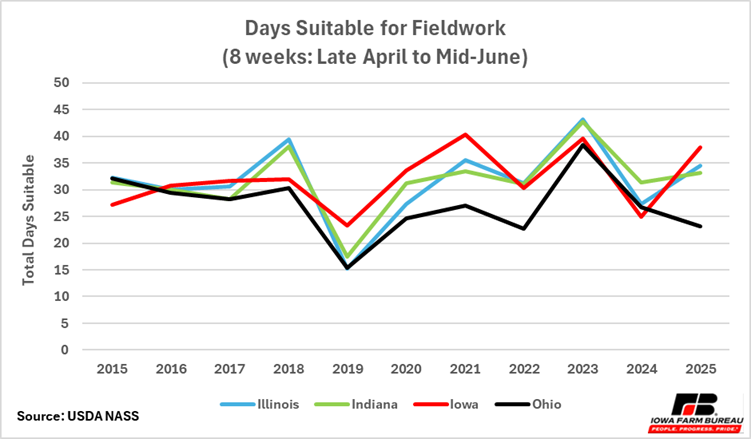
Figure 1: Days suitable for fieldwork (8 weeks) 2015-2025
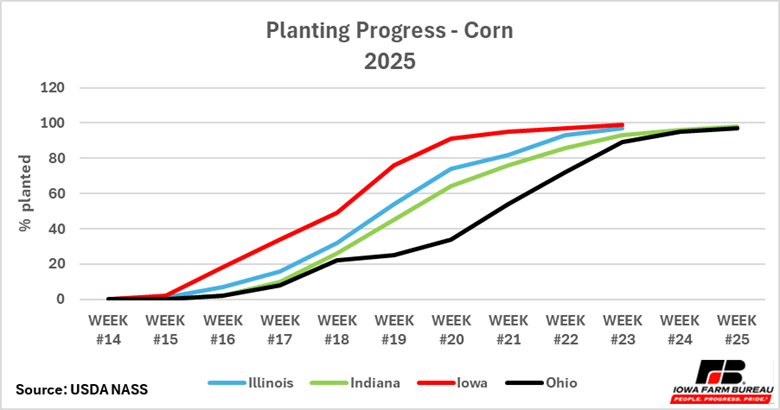
Figure 2: Corn planting progress 2025
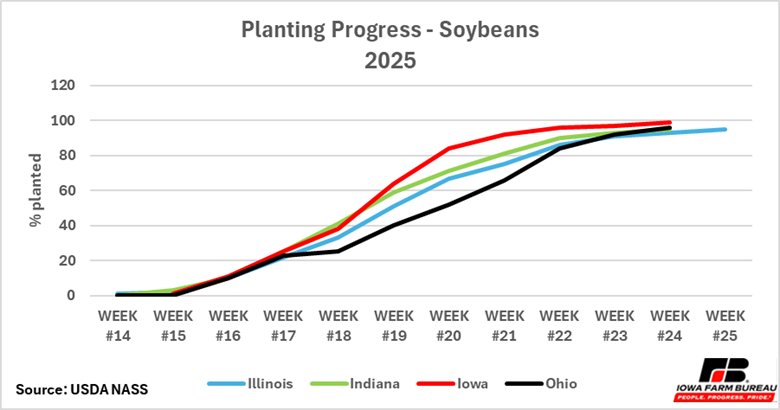
Figure 3: Soybean planting progress 2025
From a national standpoint, corn and soybean planting was largely on pace at Week 21, or mid-May, just before the final planting window for corn. That week we saw that 87% of U.S. corn was planted, closely aligning with the 5-year national average. Looking at the data throughout the last decade reveals a subtle yet consistent decline in the percentage of corn planted by Week 21.
Conversely, soybeans have seen a clear upward trend in the percentage planted by mid-May, considering the final planting date is a few weeks out from that point. This is likely reflective of the early planting trend we have seen with soybeans over the last few years where producers, dependent on the conditions, will capitalize on favorable weather windows to get a jump start on planting the soybean crop even if it delays corn in the long run. In 2015, only 60% of U.S. soybeans were planted by Week 21, that figure has since climbed to 75%. Meanwhile, 90% of U.S. corn crop was planted by Week 21, that figure has since fallen to 85% (Figure 4).
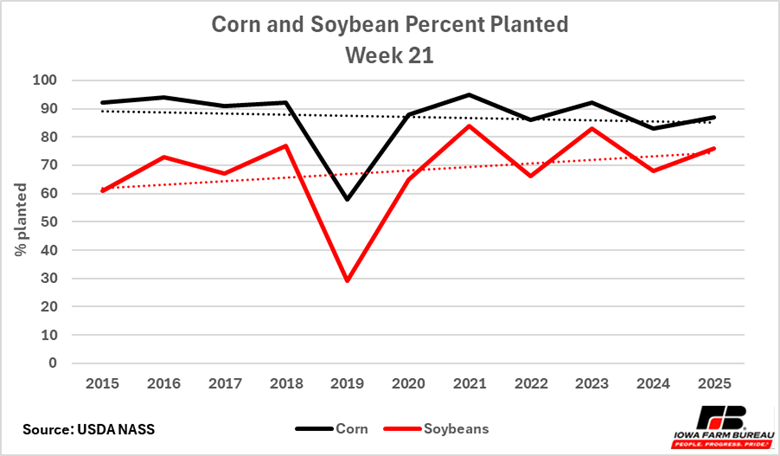
Figure 4: National corn and soybean planting progress at Week 21
Crop Conditions – Week 26
Throughout the last few weeks, the state has seen variable rain showers and thunderstorms limiting the time spent in the field. The week ending June 30th recorded just 2.7 days suitable, a slight decline from the 3.9 days seen at this time last year and behind the 5-year average of 4.7 days for this point in the year, according to the USDA Crop Progress Report.
While the vast majority of spring conditions were ideal for planting to maximize time in the field, June rainfall brought 5 to 7.5 inches to a majority of the state, with much of east Iowa receiving, on average, 2 to 5 inches throughout the month. While above normal, June precipitation across most of the state was far from setting any record. Despite the widespread precipitation and warm temperatures throughout the month of June, July precipitation is among the most critical factors affecting corn yields.
The USDA reports that 69% of the state’s topsoil moisture last week was adequate, and 21% surplus. Breaking it down by region, the north central and northeast districts each have 43% and 30% surplus, respectively, a stark contrast from the 4% and 3% surplus in the southwest and southeast districts. Comparatively, current topsoil conditions are mostly adequate – slightly below last year’s numbers. Surplus moisture levels are currently higher than 2024 and the 5-year average. Very short and short rated topsoil conditions are much lower than the 5-year average (Figure 5).
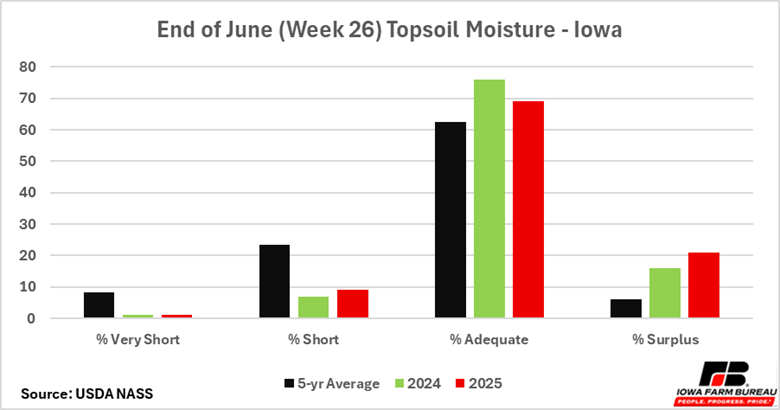
Figure 5: Iowa Topsoil Moisture at Week 26
Corn
At this point in the growing season, Iowa’s corn crop conditions remain mostly favorable with 63% rated good and 22% rated excellent. A combined 85% Good/Excellent) rating for the end of June is near the top of historical condition ratings for that time of year in Iowa. Current corn conditions are right on pace with last year’s conditions and slightly stronger than national corn crop conditions with 56% of the corn crop in the top producing 18 states being rated good, and only 14% rated excellent among those states (70% G/E combined rating).
Given the importance of July rainfall and temperatures, only time will tell if the USDA’s projected yield of 181 bu./ac. can be realized. However, the stage is set for record corn yields in several of the major producing states if even normal conditions prevail through July, August, and September. (Note: the first “objective-based yield estimates” will not be made until the September crop report. The August crop report used to be the first report to use “objective-based yield estimates” but that now does not occur until September.)
Soybeans
Iowa’s soybean crop conditions at this point in the growing season are similarly encouraging with 61% rated good and 16% rated excellent, slightly ahead of last year and fairly consistent with the state’s 5-year average. The USDA reports that soybeans blooming in Iowa hit 22% as of last week, pacing slightly ahead of last year and the state’s 5-year average (Figure 5).
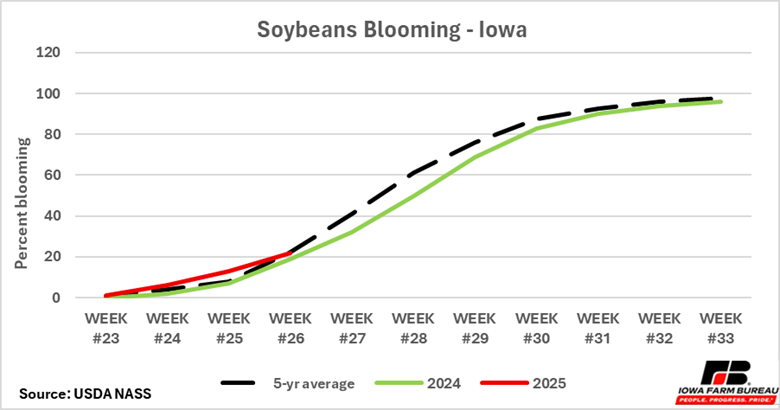
Figure 6: Iowa soybeans blooming to date
Want more news on this topic? Farm Bureau members may subscribe for a free email news service, featuring the farm and rural topics that interest them most!